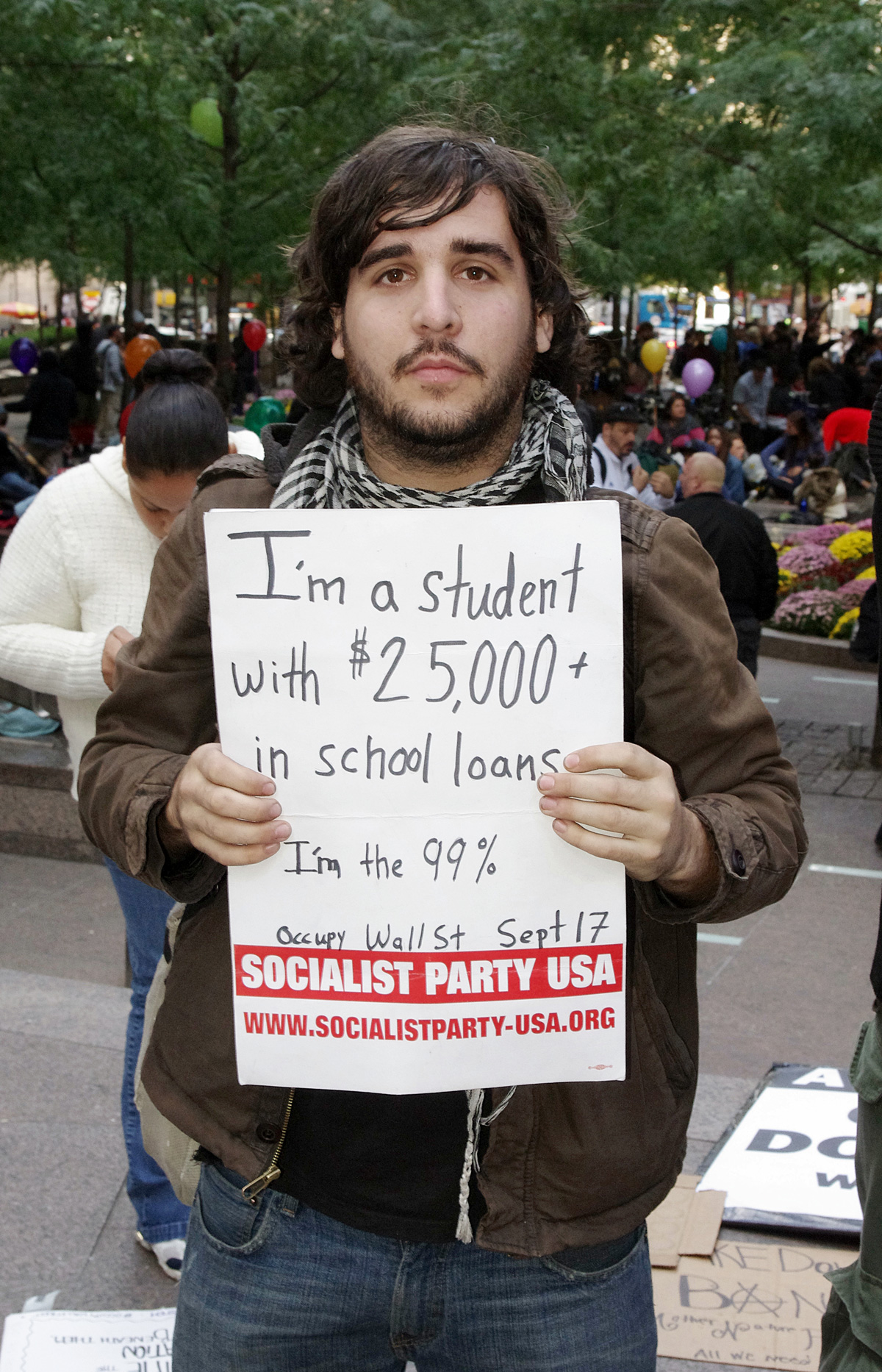These Students Might Be Justified in Walking Away From Their Loans
By:

Fifteen former Corinthian College students are refusing to pay their student loans. ...Actively refusing, not just being broke like the rest of us. Their debt strike is backed by a group called Debt Collective, which is an offshoot of Occupy Wallstreet. Debt Collective helps people who have student loan debt with the same company find each other so that they can band together and make a statement by not paying.
Corinthian College Inc. ...a school? Or a profit seeking corporation?
Corinthian College Inc. is a for-profit school system that was recently forced to close after the government investigated their predatory recruitment and lending practices, low quality of education, high rates of student drop out, loan default, and unemployment. The Corinthian schools include Everest Institute, Everest College, WyoTech, and Heald colleges (you know, the schools you see commercials for on day time television). The government orchestrated the sale of Corinthian to a debt collector called Educational Credit Management Corp (ECMC), closing 56 of the 107 schools and allowing ECMC to run the rest. ECMC has never run a school before. They have, however, gotten criticism for their shady debt collecting practices.
The students whose schools were closed had their private student loans forgiven by the government (at the taxpayers' expense). The Department of Education paid Corinthian investors (who owned $505 million in unpaid student loans) $7.5 million as part of the deal to turn Corinthian schools over to ECMC. Students' whose schools didn't close did not have their loans forgiven, even though their new schools may not offer the programs they were enrolled in prior to the sale. Even the students whose schools are closed will not have their federal student loans forgiven. Just the private ones. The Corinthian Fifteen are now demanding that the government forgive the federal loans they incurred going to fraudulent schools.
Basically the government admitted that the schools were so bad that people shouldn't be required to pay for having gone to them. But left some of them open, and are still requiring students to pay back federal loans, even if their private loans have been forgiven.
Many students are trapped in for-profit schools
The students whose schools didn't close, might be in an even worse position that the ones whose schools did. For-profit schools target the most vulnerable students- older students, those who haven't done well academically at other schools, poor and working class students, and students who lack financial knowledge. Corinthian even went out of their way to target veterans (and their spouses) so that they could profit off of their G.I. Bill funds.
Once students are enrolled they are pressured into taking out more loans for cost of living expenses (literally, students report loan officers coming into their classrooms and forcing them to sign forms on the spot).
The 90/10 Rule
For profit schools are only allowed to make 90 percent of their money off of federal student loans, so they increase the cost of tuition to increase the amount of government funds they can profit from. The average cost of tuition and fees at a for-profit institution was $15,130 in 2013, 70 percent higher than the average state-resident price of a public university. In exchange for the high fees they are paying, reports show the classes are not rigorous, teachers are not consistent, and they are not learning at a college level. If students decide to transfer, many will discover that they cannot, as many for-profit credits are frequently non-transferable to other schools. If they decide to stay and graduate, students will find that their degrees do not mean much on the job market. Corinthian was sued for falsifying the employment rates of their students in their advertisements.
The Corinthian schools, with their commercials promising job placements, are probably the most visibly awful of the for-profit schools which is why they have received more intense government scrutiny. But all for-profit schools are based on the same model of profiting off of students, and passing a portion of those profits to investors rather than investing it back into the school to improve the quality of education. Traditional colleges and universities want prestige, so they try to attract the best students with top programs and stories of successful graduates, which they can only do if they invest in providing the best education possible that, in turn, increases the odds that their alumni will succeed. Because for-profit schools are basically only interested in profits, they care less what happens to their students after graduation. Which means they don't need to offer top programs, they just need to keep students in school until they've bled them dry; who cares what happens once they graduate?
The dismal graduation rates of for-profit schools
Full-time students graduate for-profit schools at 22 percent rate. In comparison, their cohorts at public and private nonprofit universities graduate at 55 and 65 percent respectively. Seventy two percent of programs at for-profit colleges producing graduates who end up making less than high school dropouts. The biggest strike against for-profit colleges is their high student loan default rate. Nineteen percent of students default within three years of entering repayment (presumably because they cannot find good enough jobs to make payments). Public nonprofit colleges have a thirteen percent default rate (private nonprofits have a seven percent rate).
For-profit schools are just the most extreme section of a college industry in which prices have risen exorbitantly. The Corinthian 15 and Debt Collective are staging the first debt strike, but it isn't likely to be the last.
